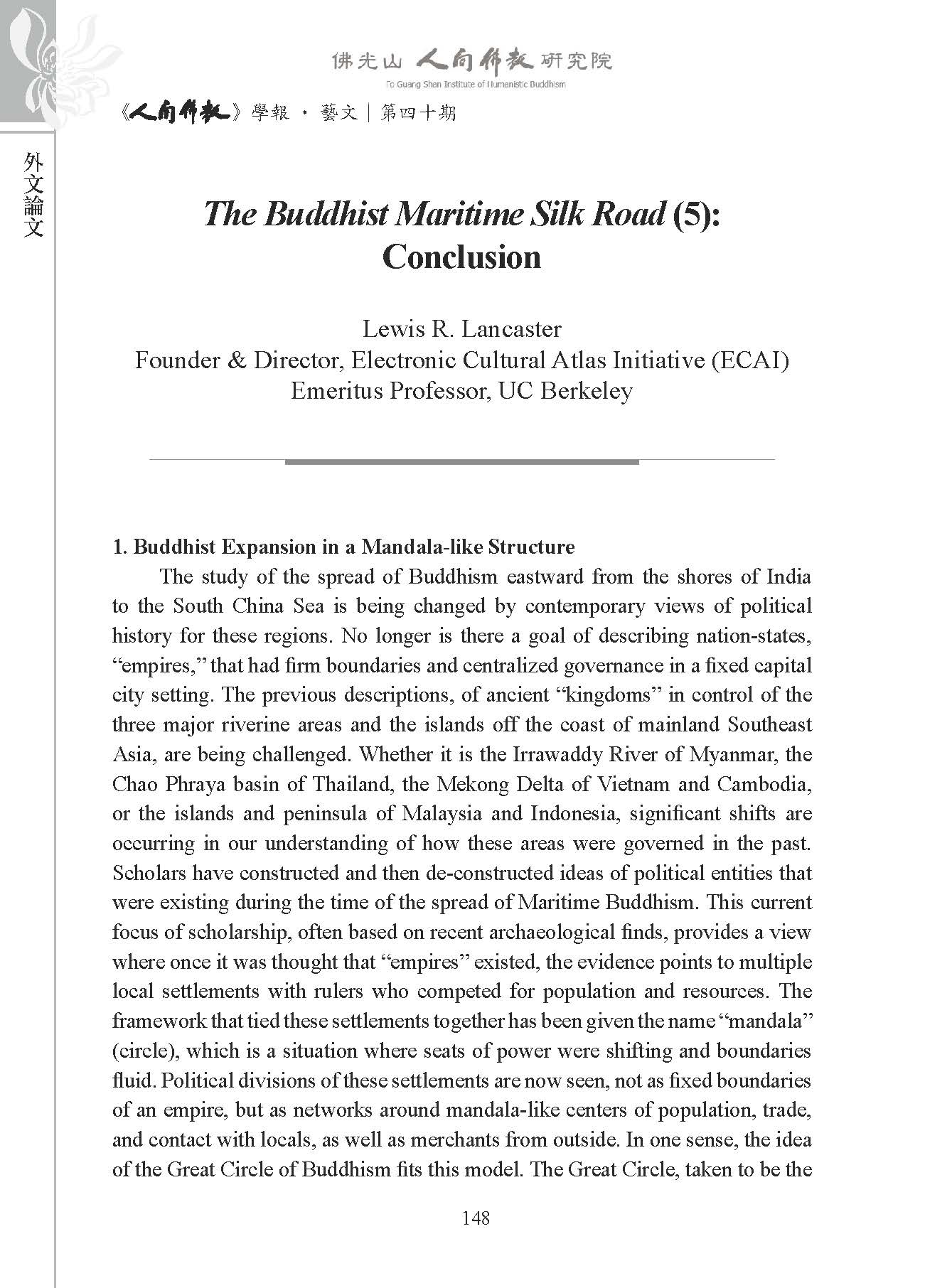
|
The Buddhist Maritime Silk Road (5): Conclusion
分類
論文
期別
《人間佛教》學報‧藝文第40期
作者
Lewis R. Lancaster
單位職稱
Founder & Director, Electronic Cultural Atlas Initiative (ECAI) Emeritus Professor, UC Berkeley
編者
妙凡、蔡孟樺主編
摘要
The study of the spread of Buddhism eastward from the shores of India to the South China Sea is being changed by contemporary views of political
history for these regions. No longer is there a goal of describing nation-states, “empires,” that had firm boundaries and centralized governance in a fixed capital city setting. The previous descriptions, of ancient “kingdoms” in control of the three major riverine areas and the islands off the coast of mainland Southeast Asia, are being challenged. Whether it is the Irrawaddy River of Myanmar, the Chao Phraya basin of Thailand, the Mekong Delta of Vietnam and Cambodia, or the islands and peninsula of Malaysia and Indonesia, significant shifts are occurring in our understanding of how these areas were governed in the past.
引文
Lewis R. Lancaster, " The Buddhist Maritime Silk Road (5): Conclusion, " 《人間佛教》學報‧藝文第40期 (2022): 148-157
全文下載











